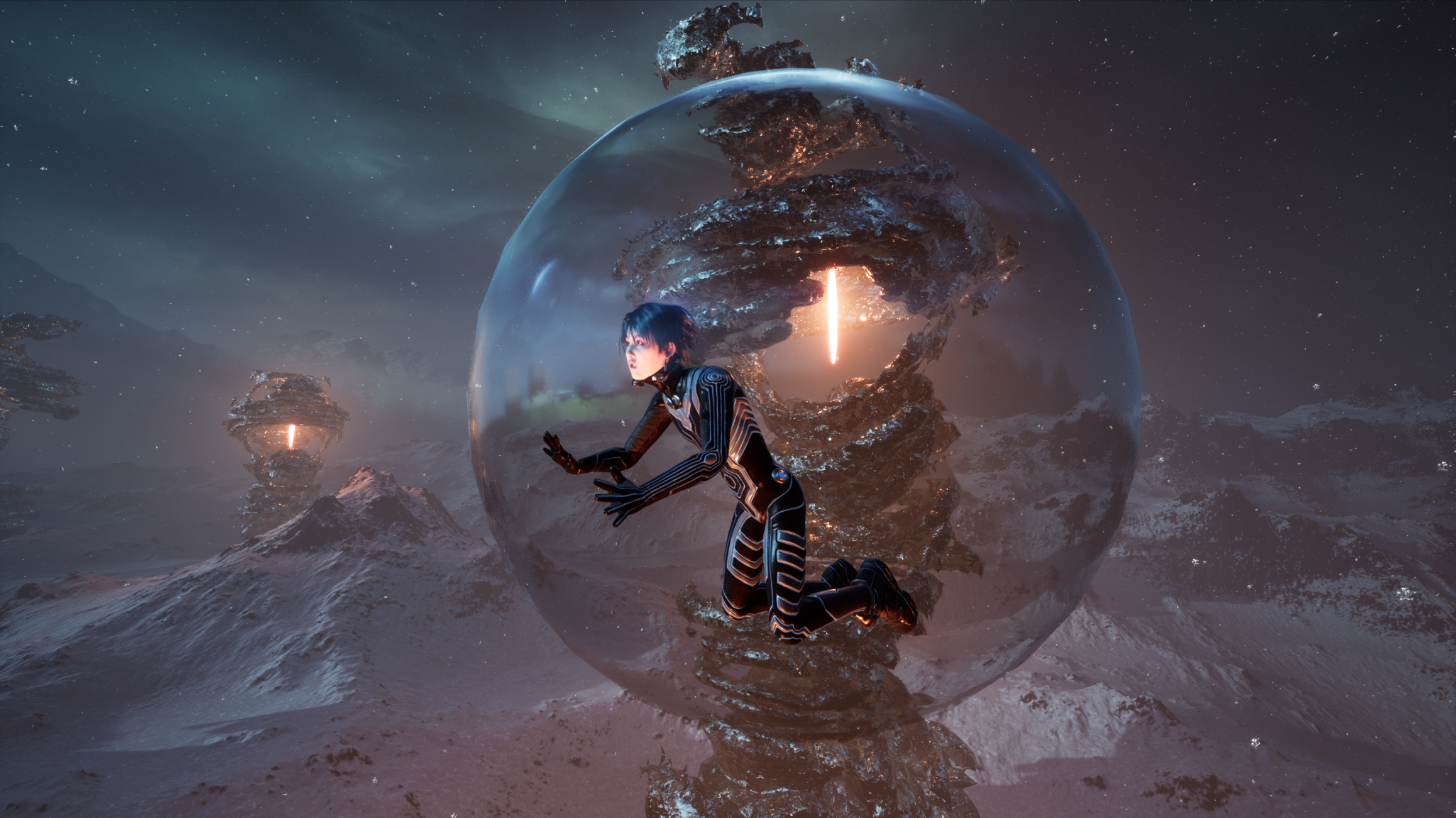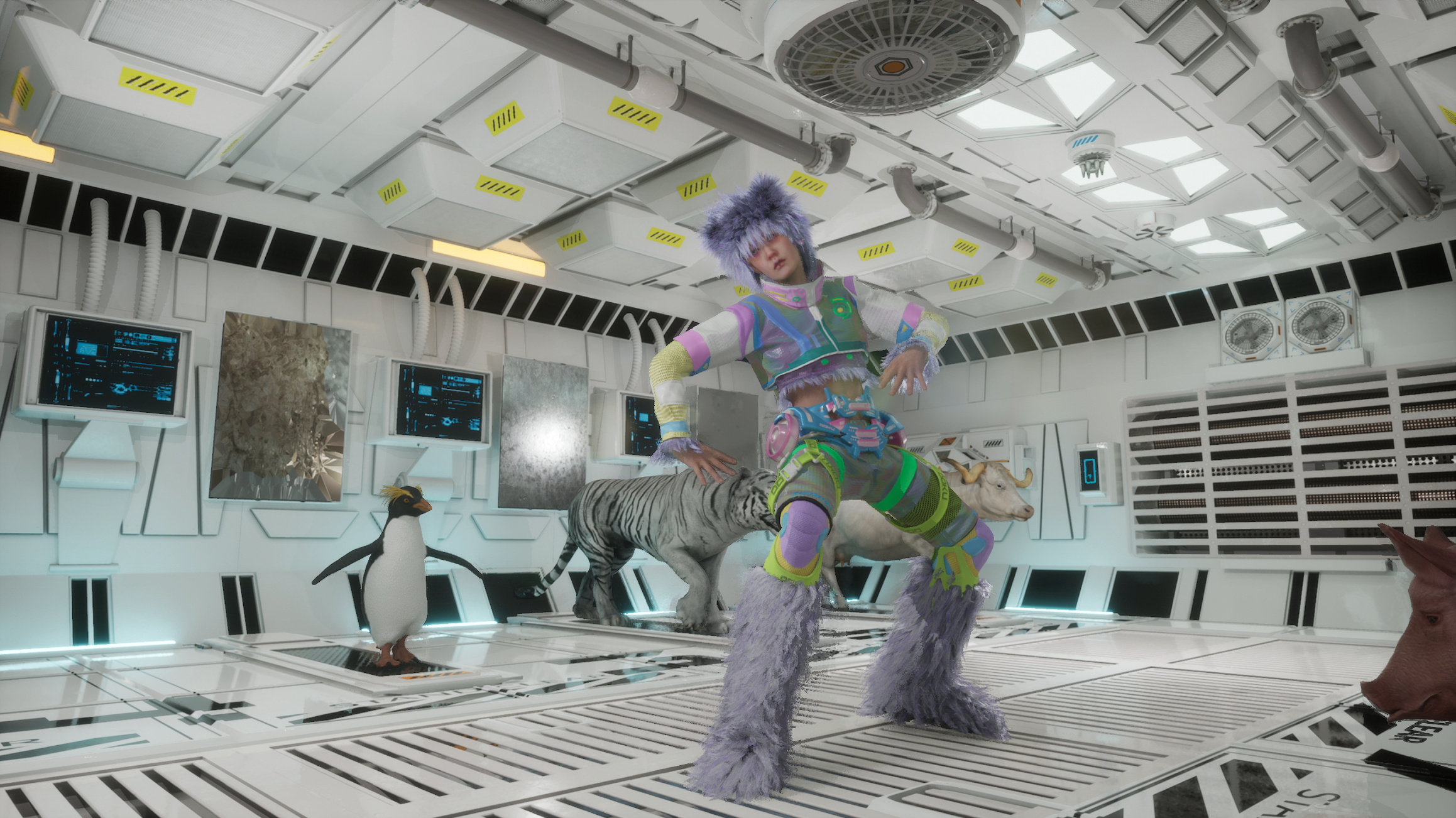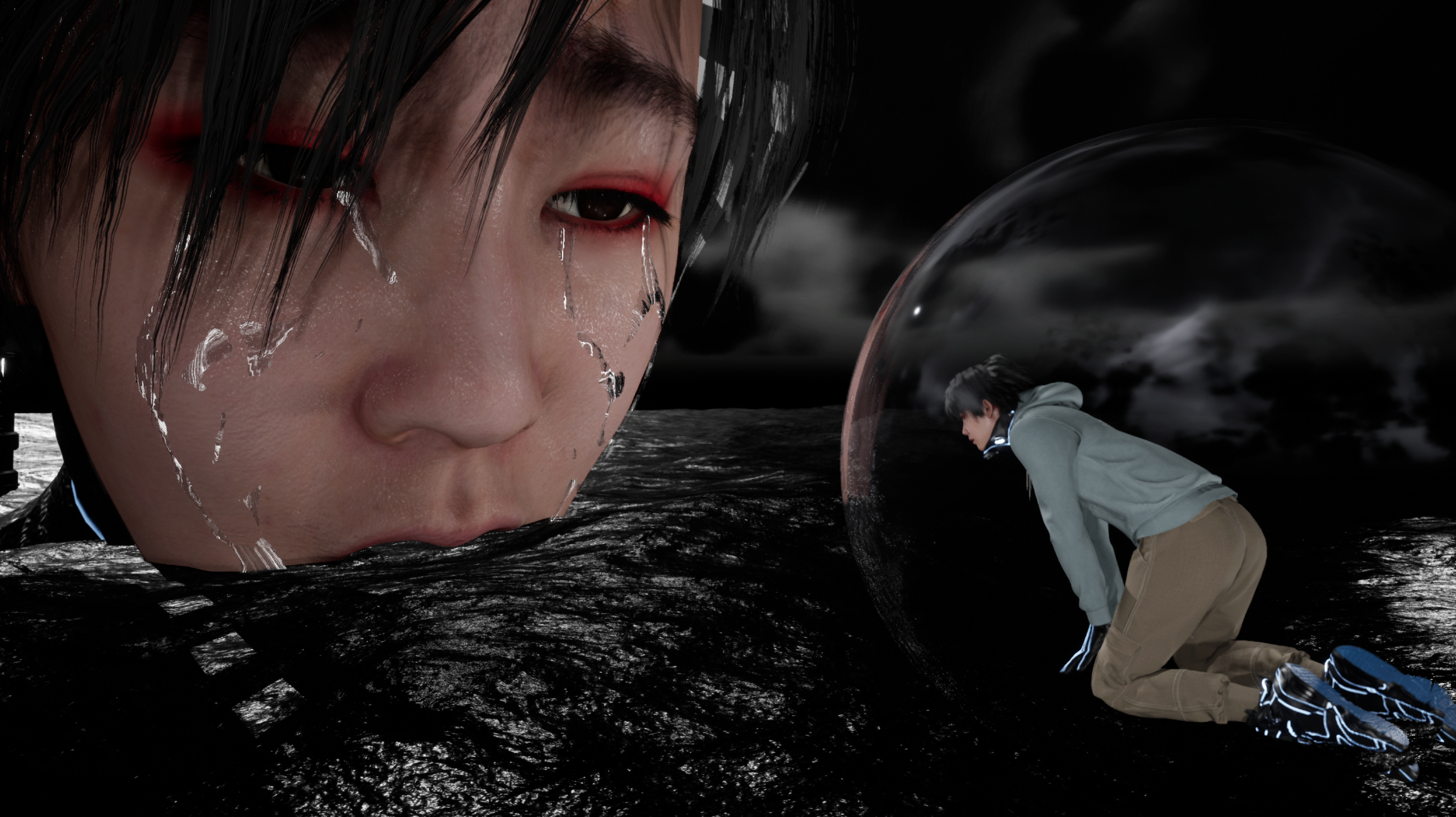3D animation, Ultra-HD, sound, ed. 1/6, 36:00 min., Städtische Sammlung Erlangen
LuYang’s video work DOKU—the self can be regarded as a haunting meditation on the conditions of existence, the complexities of moral judgment, and the limits of human knowledge. In the film, the protagonist DOKU, which is short for Dokusho Dokushi,[1] confronts his own demise after a dream dominated by death and destruction. At the instant of his death in a destroyed city, however, DOKU wakes up in an airplane, which immediately goes through turbulence. Only the blink of an eye separates death in a dream and life’s real dangers. The off-screen narrator connects this experience with Daoist thoughts, which are echoed in the sentence “I am the person in my dream, and I am also the dreamer” (3′24″), making a direct reference to Zhuangzi’s famous butterfly dream.
This film is the first of LuYang’s works in which his digital reincarnation DOKU, originally created in 2020, becomes integrated into a larger narrative. In LuYang’s characteristic style, elements from previous works also recur here, coming together to form new constellations in a broader, more complex world. The computer game motif, which in DOKU—the self works as a metaphor for the interplay of rebirths, is a constant in this work. The six different characters through which the avatar DOKU appears in the film were already introduced separately in LuYang’s oeuvre. They correspond to Mahāyāna Buddhism’s six realms of existence (Sanskrit: gatis), which are organized as follows: first the realms of gods, demigods (Sanskrit: asuras), and humans, then the realms of animals, hungry ghosts, and hell denizens.
In DOKU—the self, these six avatars are first introduced in a sequence resembling a music video. The human DOKU figure subsequently travels inside a transparent sphere across different fantastic worlds. Along the way, one of DOKU’s encounters is with his gigantic ego, which seems to be nearly drowning in a sea of his own tears. Referencing the Buddhist aspiration to break out of the rebirth cycle, DOKU eventually grows weary of the game he was dragged into and turns to higher spheres. In a bold gesture, he tosses the controller away. This is when his body ascends into the sky and dissolves bit by bit into the infinite star-studded universe. DOKU’s virtual body, his senses, and eventually his ego shatter into the tiniest crystals and merge with the stars.
Pursuing his programmatically formulated claim for DOKU in this work, LuYang focuses on overcoming thoughts based on dichotomous concepts such as beautiful and ugly or good and evil. Furthermore, our attention is drawn to aspects of compassion and the idea that living beings are universally connected. The video ends with an aphorism reminiscent of a Zen Buddhist kōan (公案): “The coin in my hand and everything around the coin, that is where they are.” (35′42″) A kōan’s goal is to convey the realization of nonduality: there is no such thing as an ego whose existence would be separate and independent from everything else.
[1] In Chinese, Dusheng dushi 独生独死 means “we live and die alone”.
Malte Lin-Kröger und Nora Gantert





